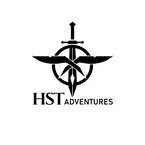When you think about Nepal, the first thing that comes to mind is Everest. After the first successful ascent of Everest, the region has become a popular destination around the globe. Over the last two decades, the Everest region (Khumbu) has become quite popular for trekking and climbing activities. As the region is rich in high peaks, it is a bucket list destination for every adventure lover.
The Everest Base Camp Trek is a 12-day Himalayan journey that offers majestic mountain views and insights into Sherpa culture. Our journey begins with a scenic flight from Kathmandu to Lukla, which serves as the gateway to the Everest region. The trek starts from Lukla, passing through the Sagarmatha National Park, listed as a UNESCO World Heritage Site. On the next day, you will reach Namche Bazaar, a Sherpa village located at an altitude of 3,440 meters. Namche Bazaar is the best acclimatization spot for the EBC Trip. The journey continues to Tyangboche (3820m), a spiritual hub of the Khumbu, the following day. The next stops are Dingboche, Lobuche, and Gorakshep. Gorakshep is the final human settlement, from where EBC is just a three-hour journey, the ultimate destination. Additionally, Kalapatthar, a viewpoint, is a two-and-a-half-hour hike from Gorakshep.
The trip is not only about reaching the Himalayas but also about exploring many things, such as cultural aspects. The Everest region is the homeland of the renowned Sherpa community, so the trip offers the opportunity to explore Sherpa culture and their lifestyle. As the region is located within a national park, some rare wildlife species like Musk Deer, Himalayan Thar, and Himalayan pikas can be explored.
Overview
Our professional trekking guides, trained in first aid and known for their friendly nature, ensure that your journey is comfortable and meaningful. As an experienced company dedicated to providing quality service, we advise our clients to have proper trekking gear and clothing. Additionally, we strongly recommend drinking enough water to prevent dehydration.





